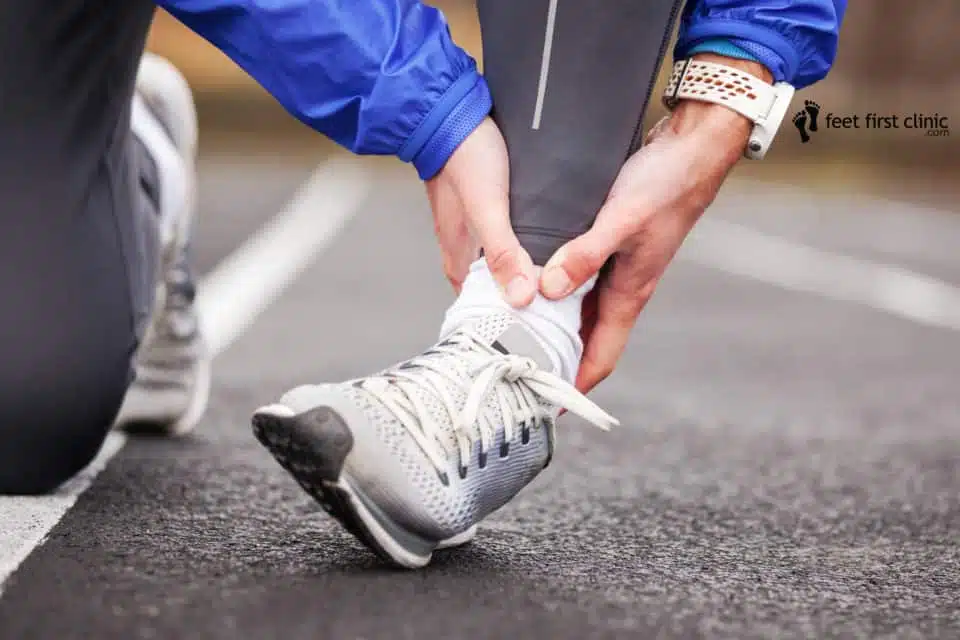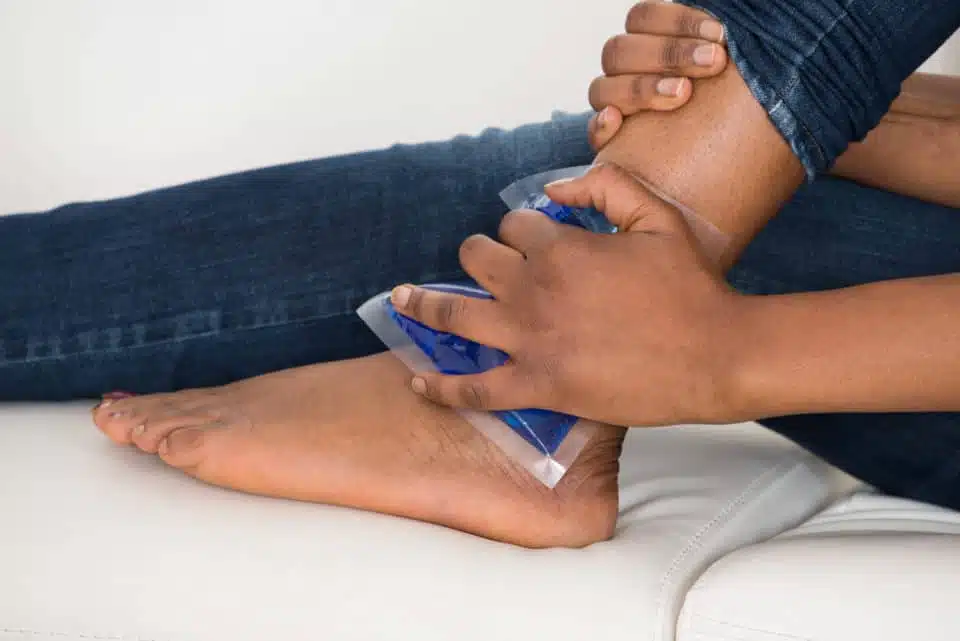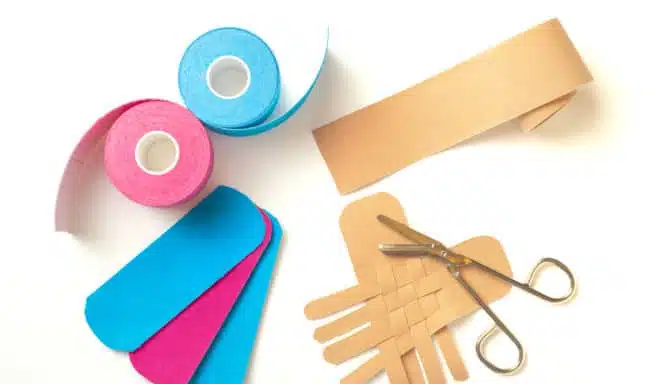There is no injury more common than ankle sprains. In fact, approximately 85% of all ankle injuries sustained in North America are a sprain of some sort. What makes ankle sprains so common? And what can be done to help prevent and heal these lower leg injuries?
In this article, we explore some common questions regarding ankle sprains including:
- Is it OK to walk on a sprained ankle?
- How do I know what kind of sprain I have?
- Can I sprain an ankle without knowing it?
- What are the most common ways of spraining an ankle?
- Can you sprain your ankle while sleeping?
- How long does a sprained ankle take to heal in a child?
- And finally, what is the fastest way to heal a sprained ankle?
The truth is that an ankle sprain can occur in any setting, making anyone and everyone prone to this injury at some point or another. Although it’s common while playing sports, especially soccer, basketball, tennis, and dance, even a slip-up at home — for instance slipping on a stair — can lead to injury.
Read on for more information about ankle sprains, and how a Foot Clinic can help you in your recovery (and prevention).
Is it OK to walk on a sprained ankle?

How do I know what kind of sprain I have?
There are varying degrees of ankle sprains. These range from mild to severe sprains. Severity depends on the damage to the ligaments, and symptoms include different levels of swelling, discolouration, and pain. Ankle sprains are typically categorized as follows:
- Mild sprain (Grade I): Minor over-extension of the ligaments, limited pain, mild levels of swelling, and some weight-bearing tolerance.
- Moderate sprain (Grade II): A mix of over-extended ligaments and minor tears, moderate pain, slight discolouration, medium levels of swelling, and limited weight-bearing tolerance.
- Severe sprain (Grade III): Complete tear of the ligament, high levels of pain, intense discolouration, swelling (sometimes as much as a golf ball), and zero weight-bearing tolerance.
The most accurate method of diagnosing a sprain is by visiting a doctor. Imaging or a physical examination of your ankle may be done to determine the severity of the injury.
Can I sprain an ankle without knowing it?
Yes! Although most ankle sprains are acute, you may in fact tweak your ankle ligaments unknowingly. By continuing, the symptoms and damage may worsen, and you could wake up one day with an ankle sprain without any recollection of it happening, or knowing how it happened. For example, you could be out for a walk or a run and have a slight misstep, and forget that it happened. You may not recognize it as a sprain at first, but lo and behold, swelling and pain could surface 1 to 2 days later.
Common ways to sprain an ankle
Any motion that pushes your ankle’s normal range of motion beyond its limit can cause an ankle sprain. Some common everyday activities include:
- Walking on a beach where the ground is uneven.
- Playing a sport like soccer, tennis, basketball, volleyball, or any sport involving side-to-side movement.
- Wearing flip-flops or unsupportive footwear where your ankle may be more prone to rolling. Instead, visit a foot clinic to see a foot specialist for footwear recommendations and help you find summer-friendly options that won’t leave you rubbing your heels after a long walk through the park or icing your ankles after a trip to the beach.
- Falling or slipping in the workplace, especially if you work in a labour-intensive environment or are on your feet all day.
- Re-injuring a previously sprained ankle that is not fully healed.
Can you sprain your ankle while sleeping?
Because any movement that twists or turns your ankle in a way that stretches the ligaments can cause a sprain, the answer is yes, you can sprain your ankle while sleeping. However it is not a common source of ankle sprains.
How long does a sprained ankle take to heal in a child?
The peak incidence of ankle sprains occurs between 15 and 19 years of age, according to research published in the National Library of Medicine. The same research suggests that ankle injuries in adolescents differ slightly from their adult counterparts due to the growth plates and development of bones and muscles in the lower extremities. Beyond physiology, children can be prone to ankle injuries simply due to the fact that kids will be kids. That children play outside, can be active in sports, or perhaps are generally a bit more carefree may mean they could slip up from time to time and fall awkwardly on their ankles.
For Grades I and II ankle sprains — paired with NSAIDs, activity modification (i.e.: being careful about the weight-bearing activities a child does), and rest — an ankle sprain can fully heal in approximately 4-6 weeks. A child may return to weight-bearing activity sooner if proper precautions are taken, such as ankle taping, but one should be cautious to avoid re-injuring the ankle. Grade III sprains may involve additional recovery depending on whether a surgical procedure is required, in which case recovery time may be extended to 8-12 weeks and could possibly involve physiotherapy.
What is the fastest way to heal a sprained ankle?
The fastest way to heal a sprained ankle is to allow your body to run its natural course of healing and keep your ankle in a stable position. Although there’s no magical cure, following the RICE method of recovery is a surefire way to improve your odds of a smooth recovery.
RICE stands for:
- Rest. Take a rest. Reduce the weight on your foot, whether that means wearing an air cast, using crutches, or just resting for a day or two. Avoid any strenuous exercise until your injury has been diagnosed, or if you continue to experience intense pain with each step.
- Ice. Use an ice pack (no direct contact with actual ice to the skin) to reduce swelling. This should also help with pain management.
- Compression. Wrap your ankle, if necessary, with a compression garment. This helps stabilize your ankle and reduces swelling. Additionally, having your ankle taped by a medical professional can help stabilize the ankle joint, and prevent the ankle’s lateral movement.
- Elevation. Elevate your feet above your heart, whether that’s lying down or sitting down with your feet up on an object (like an ottoman or desk). This will encourage blood flow and help reduce swelling.















